Seasons in IndiaSeasons remind us that change is the law of nature and a sign of progress. In India, there are mainly six seasons as per the ancient Hindu calendar (the Lunisolar Hindu). The twelve months in a year are divided into six seasons of two-month duration each. These seasons include Vasant Ritu (Spring), Grishma Ritu (Summer), Varsha Ritu (Monsoon), Sharad Ritu (Autumn), Hemant Ritu (Pre-Winter) and Shishir Ritu (Winter). However, as per the India Meteorological Department (IMD), there are four seasons in India like other parts of the world. 1) Spring Season (Vasant Ritu)The spring season in India is a season of two-month duration which are March and April. In the Hindu calendar, this season occurs in the months of Chaitra and Baisakh respectively. 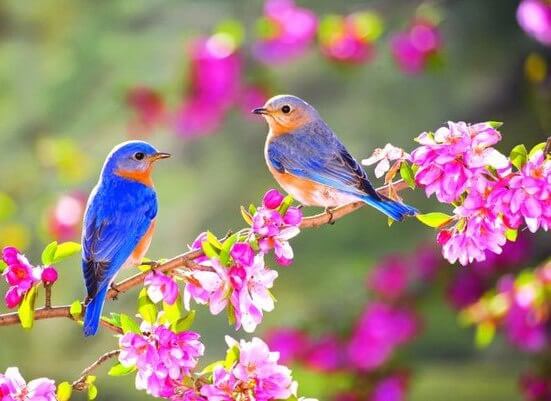
It is a pleasant and beautiful season with an average temperature of 32 degree centigrade. It starts after the winter and lasts till summer starts. The day becomes longer and nights become shorter in this season. The people come out of the blankets and woollen clothes and start wearing light clothes. They are filled with excitement and happiness. The tree shed their leaves, new leaves start appearing. Birds and animals also love this season and are happy in this season. Birds start chirping, singing and butterflies start hovering over the flowers. Besides this, many famous Hindu festivals are celebrated in this season such as Holi, Vasant Panchami, Gudi Padwa, Baisakhi, Hanuman Jayanti, and more. 2) Summer (Grishma Ritu)It is also a two-month duration season that includes the months of May and June. As per the Hindu calendar, this season mainly occurs in Jyeshta and Aashaadha. In this season, the weather is very hot in most of the parts of India. This season starts with the end of April and lasts till the end of June, e.g. duration after spring and before autumn. 
The average temperature remains around 38 degree centigrade. The days are longest in this season while the nights have the shortest duration. Due to the scorching sun and high temperature, the water level of ponds, rivers goes down and people including animals, birds, etc., feel uncomfortable and tends to stay inside as much as they could. Although this season may be annoying, it is good for the crops as they ripen only in the summer season. Also, there are lots of options in this season to stay hydrated and beat the heat such as watermelon, fruit juices, lassi, ice cream, lemon water, and more. The major Indian festival celebrated in the summer season are Guru Purnima and Rath Yatra. 3) Monsoon (Varsha Ritu)It includes the months of July and August. As per the Hindu calendar, this season comes in the months of Shravana and Bhadrapada (Sawan and Bhado). As the name indicates, rainfall occurs in most of India in this season. 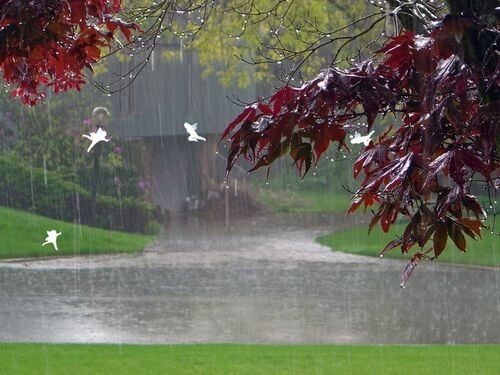
As compared to the summer season, the days are short and nights are long in this season and the average temperature remains around 34 degree centigrade. It is sometimes called 'green season' by the officials of the tourism sector. The earth is carpeted with greenery, birds sing melodiously and level of water rises in the rivers, ponds and canals in this season. The sky is filled with black clouds before it rains and rainbow can be seen in the sky after the rain stops. The important Hindu festivals that are celebrated in this season are Onam, Krishna Janmashtami, and Raksha Bandhan. 4) Autumn (Sharad Ritu)The season of autumn comes in the months of September and October. As per the Hindu calendar, this season comes in Ashwin and Kartik months. The hot and humid weather starts disappearing and leaves start falling off the trees in this season, so it is also known as the fall season. The sky becomes clearer as compared to the monsoon season and clear moon can be seen in the sky along with countless starts that look like pearls scattered in the sky. The water of the rivers and ponds settle down and becomes clean and there is no mud in the villages. The insects and mites gradually start disappearing with the arrival of autumn. 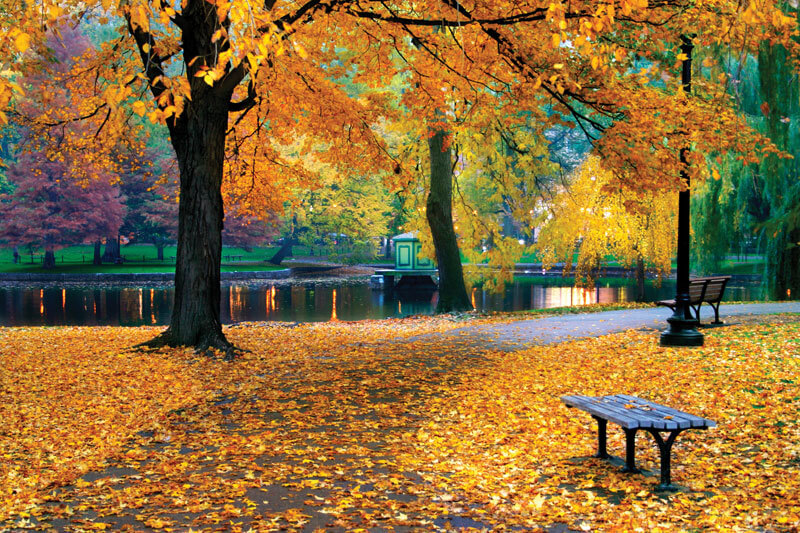
It starts after the monsoon or rainy season and lasts till the start of the pre-winter season. The average temperature in this season remains around 33 degree centigrade. The length of the day and night is almost equal in this autumn. Equinoxes also occur in this season. It is an event in which the Earth's axis is titled in a way that it is neither inclined towards nor away from the Sun. The major Hindu festivals that are celebrated in this season are Navaratri in which Hindu devotees worship the nine different forms of Goddess Shakti, Sharad Purnima which is celebrated as the harvest festival, and Vijayadashami (Dussera) to celebrate the victory of Ram over Ravana. 5) Pre-winter (Hemant Ritu)This season comes in the months of November and December. As per the Hindu calendar, these season occurs in the Agrahayana and Pausha ( Agahan and Poos) months. It starts with the end of October and lasts till the start of winter season or January. So, it precedes the winter season. 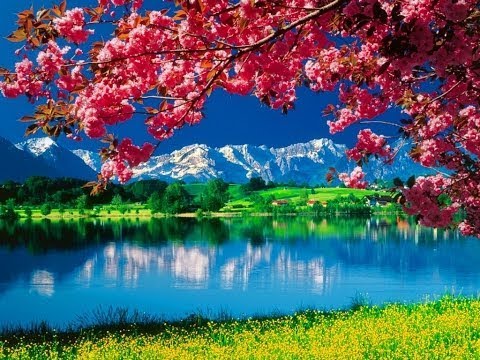
This season is moderately cold with an average temperature of around 27 degree centigrade. It is the transition from autumn to winter and is the most pleasant and enjoyable time of the year. The days become shorter than nights and the nights are foggy, colder. Rainfall is occasional in this season. The trees in the Mountains and hills start shedding their ripe leaves to reduce evaporation of trees to compensate the loss of water. However, soon the trees are loaded with new leaves and flowers. So, it gives the message of leaving the old temptation and go for newness or innovation. Winter sports of national and international level are organized in this season. The flowers that bloom in this season are Hibiscus, Rose, Bougainvillea, Jasmine, and more. The important Hindu festivals which are celebrated in this season include Diwali and Bhai Dooj. Besides so many benefits, there are also a few things that are not liked in this season. Such as diseases like cough, asthma, cold start appearing and infecting the people. Due to low rainfall, some crops may get spoiled and crops and vegetables may rot due to fog and frost. 6) Winter (Shishir or Shita Ritu)The winter season in India comes in the months of January and February. As per the Hindu calendar, this season occurs in the months of Magha and Phalguna. This season lies between pre winter and spring season. This season is characterized by dryness, cold winds, occasional rainfall and snowfall. 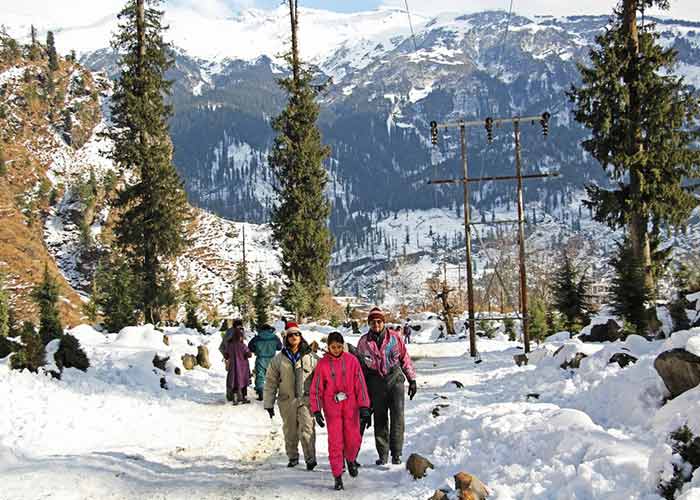
It is the coldest season of the year with an average temperature of around 20 degree centigrade and the weather is affected by air pressure. An area of high pressure develops in the northern region of the Himalayas that causes the flow of wind from this region towards the Indian subcontinent. In some regions temperature falls below 0 degree centigrade and snowfall is also very common in most of the hill stations of India in this season. The Kharif crops ripen in this season. A large variety of fruits, flowers and green vegetables are available in abundance in this season. Besides this, winter season in India starts with the winter solstice. It is a geographical event in which the sun is at the highest summit in the sky. The major Hindu festivals celebrated in winter season include Pongal, Shivratri, Lohri, and Pongal.
Next TopicCleanest City in India
|
 For Videos Join Our Youtube Channel: Join Now
For Videos Join Our Youtube Channel: Join Now
Feedback
- Send your Feedback to [email protected]
Help Others, Please Share










